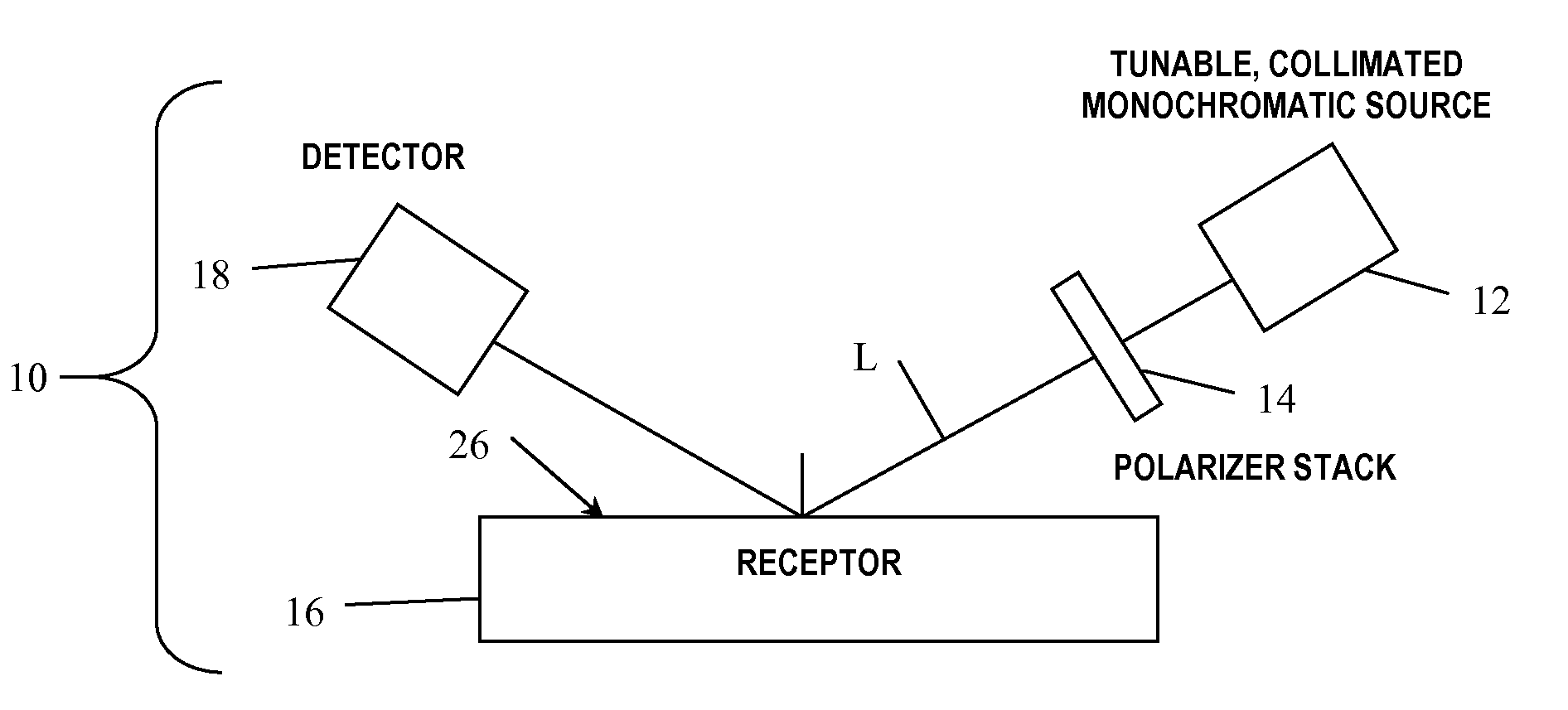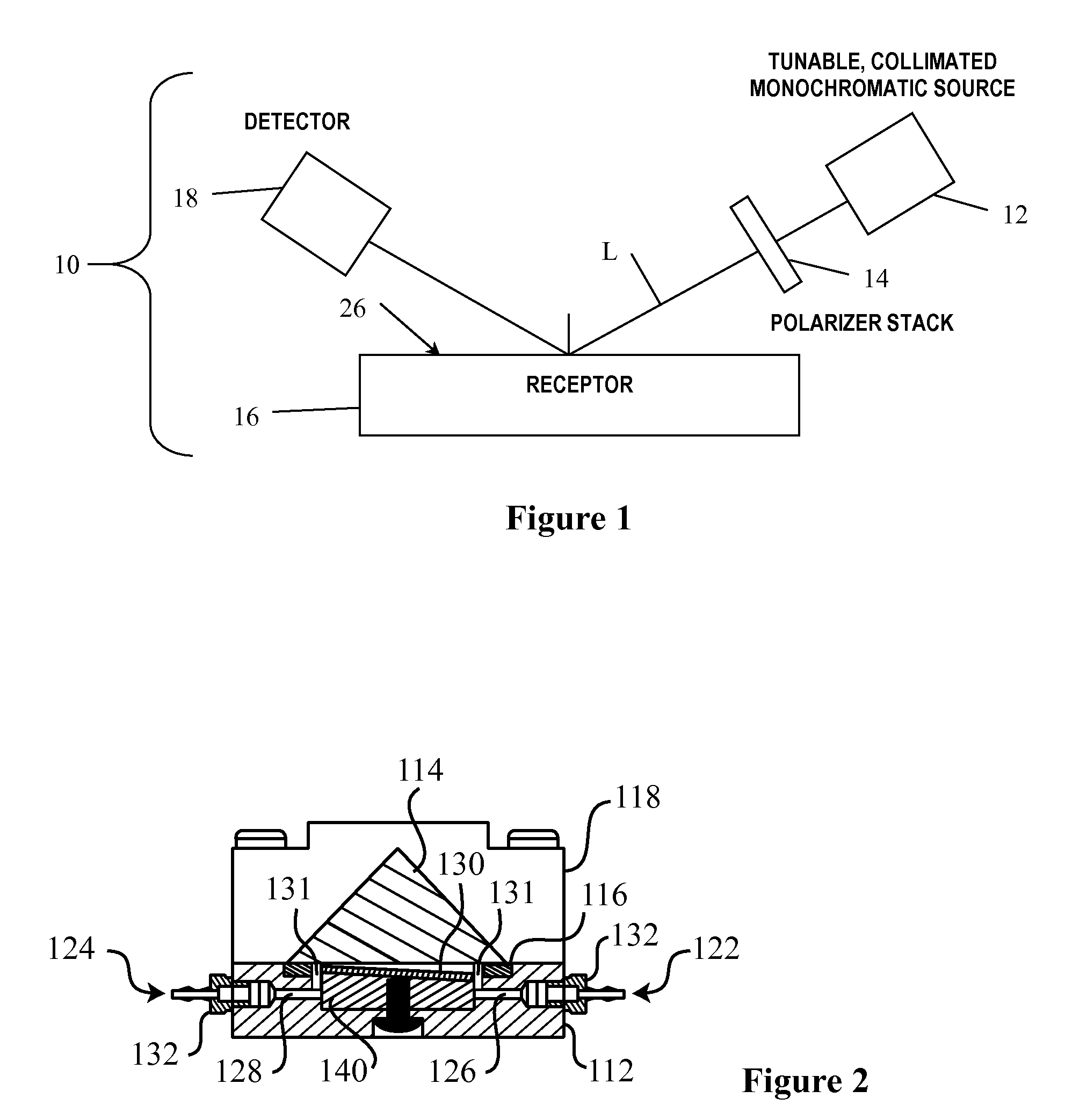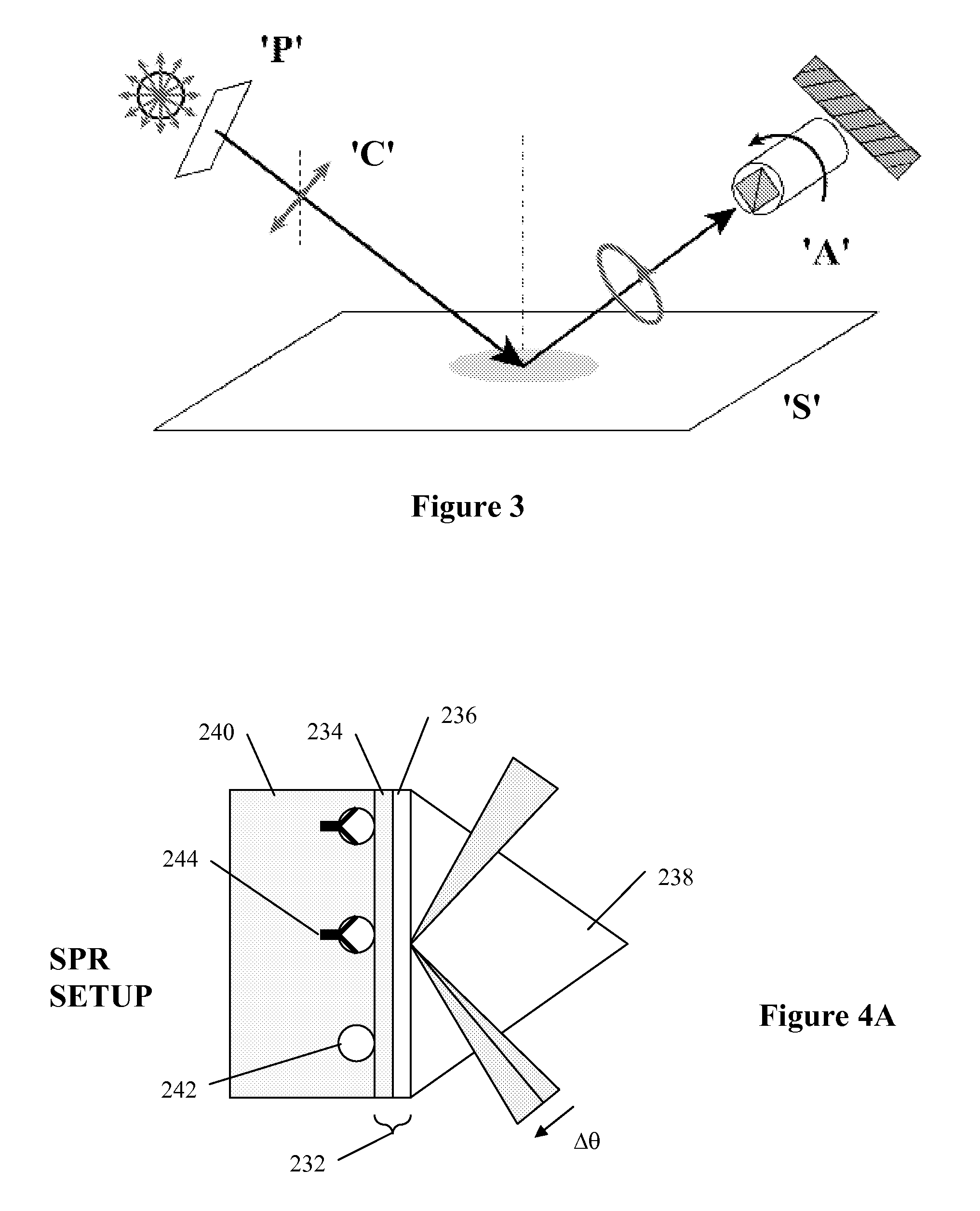Arrayed detector system for measurement of Anti-viral immune response
a detector system and antiviral technology, applied in the field of sensor chips, to achieve the effect of rapid detection method, high sensitivity, and maintaining the robustness of biological fluids
- Summary
- Abstract
- Description
- Claims
- Application Information
AI Technical Summary
Benefits of technology
Problems solved by technology
Method used
Image
Examples
example 1
Oxide Layer Thickness and VLP Deposition Density
[0066]As a first step towards the creation of AIR chips capable of detecting anti-HPV antibodies, an assessment was made of appropriate materials conditions (oxide layer thickness and VLP deposition density) to allow production of chips with the desired null-reflectivity condition fulfilled. Dynamic light scattering measurements revealed that the population of HPV16 / VLPs in solution was monodisperse, and the average calculated particle diameter varied only slightly with respect to the buffer conditions utilized: particles solubilized in MPBS alone had a measured diameter of 50 nm, while particles in MPBS supplemented with glycerol and Tween-20 had a measured diameter of 47 nm. This slight discrepancy is attributed to the differences in viscosity and refractive index, parameters required to calculate the hydrodynamic radius of a particle from the measured diffusion coefficient using the Stokes-Einstein Relation, between the two buffer f...
example 2
Model for HPV VLP Probes
[0068]To begin to address this question, as well as determine the optimum oxide thickness needed for AIR chip fabrication, the VLP was modeled as a hollow sphere with outer radius r1=25 nm and inner radius r2=15 nm (FIG. 6). This model was based on X-ray crystallographic analysis of the L1 protein, which indicated a longest dimension of the protein of 10 nm (Bishop et al., “Crystal Structures of Four Types of Human Papillomavirus L1 Capsid Proteins: Understanding the Specificity of Neutralizing Monoclonal Antibodies,”J Biol Chem 282:31803-31811 (2007), which is hereby incorporated by reference in its entirety). Using this model, 78% of the volume of the VLP consists of protein, while 22% consists of buffer. Assuming the interior of the VLP is filled with a saline buffer and the refractive index of a protein is 1.5 (Tronin et al., “Orientational Distributions for Cytochrome C on Polar & Nonpolar Soft Surfaces by Polarized Total Internal Reflection Fluorescence...
example 3
Optimization of VLP Immobilization Conditions
[0069]Results for the optimization of VLP immobilization conditions are shown in FIG. 7. HPV11 VLPs were slightly more well-behaved in this assay than HPV16 VLPs; whether this is due to intrinsic properties of the individual VLPs themselves, or due to the particular preparation methods is uncertain. In the end, 20 μg / mL was chosen as the concentration for further experiments, as higher concentrations gave too much signal over background. These results also suggest that VLPs behave more like a close-packed layer than like isolated particles (see FIG. 5). This is a gratifying result, and indicates that other virus-sized particles should be well-behaved components of AIR chips.
PUM
| Property | Measurement | Unit |
|---|---|---|
| Angle | aaaaa | aaaaa |
| Concentration | aaaaa | aaaaa |
| Immunogenicity | aaaaa | aaaaa |
Abstract
Description
Claims
Application Information
 Login to View More
Login to View More - R&D
- Intellectual Property
- Life Sciences
- Materials
- Tech Scout
- Unparalleled Data Quality
- Higher Quality Content
- 60% Fewer Hallucinations
Browse by: Latest US Patents, China's latest patents, Technical Efficacy Thesaurus, Application Domain, Technology Topic, Popular Technical Reports.
© 2025 PatSnap. All rights reserved.Legal|Privacy policy|Modern Slavery Act Transparency Statement|Sitemap|About US| Contact US: help@patsnap.com



